|
My first exposure to Professor Bernard Quatermass, perhaps writer Nigel Kneale's most celebrated creation, was teasingly third hand, tales told to me by my mother of being glued to a science fiction TV series that was broadcast live by the BBC and was so tense that she often found herself watching through terrified fingers. Even before I saw a single frame of film in which this character featured, I was fascinated by these stories and enthralled by that name, a beautifully devised combination of syllables that for years I believed could only belong to a scientist.
Like many of my generation, my first actual encounter with Bernard Quatermass was in Hammer's 1955 film version of The Quatermass Experiment, where funding deals had transformed the Professor from and Englishman into a no-nonsense American by way of actor Brian Donlevy. Back then I had no way of knowing that he should be anything else – I was a kid raised on Hollywood movies, and at that young age there seemed nothing incongruous about an American lead in an otherwise very British production. And for a young boy still discovering the joys of science fiction cinema, this film was scary. A few years later I first saw Hammer's film adaptation of the third Quatermass series, Quatermass and the Pit, and had to redefine just what the term 'scary' meant. It's a tragedy that all but two of the episodes of the original Quatermass Experiment TV series have been lost. Happily the original TV versions of Quatermass II and Quatermass and the Pit have survived and are available on DVD (together with the surviving episodes of the first series), and even all these years and expensive science fiction movies later they are absolutely worth seeing. Quatermass and the Pit in particular remains a gripping example of science fiction television at its most chilling and visionary, and in the TV original Bernard Quatermass was played by Hammer stalwart André Morrell, who for many of us remains the actor who most perfectly embodied the character.
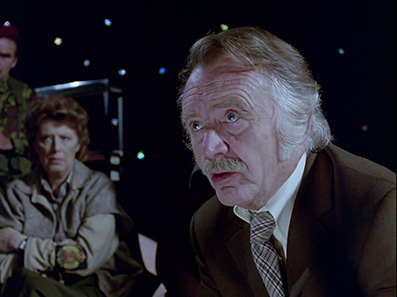
Then in 1979, twenty-one years after the Quatermass and the Pit television series was first screened and twelve years after Hammer's belated film adaptation, a new Quatermass TV mini-series was announced, to be produced by Euston Films and screened by Thames Television, one of the BBC's commercial TV rivals. Although the name of Bernard Quatermass no longer carried the weight it had done in the late 50s, the news still generated a degree of excitement, particularly as it was again the work of visionary writer and Quatermass originator Nigel Kneale. When the series was screened I cancelled all other arrangements to make sure I was able to see every episode on its first run. In contrast to all of the Professor's previous film and TV adventures, however, I remember being unsure how I felt about this new one, and in the years that followed I made no serious effort to seek it out again. Thus when this new, remastered Blu-ray release was announced by Network, it presented me with the perfect opportunity to revisit and potentially re-evaluate a series that had met with a lukewarm reception all round on its original screening, but has since developed a bit of a cult following.
Quatermass is set in the not too distant future, one in which the country has suffered a considerable degree of societal collapse. This is at its worst in metropolitan areas, where armed gangs fight each other and ambush the unprotected, and small bands of muggers rob anyone unfortunate or foolish enough to find themselves on the streets without a vehicle. It's a situation that confronts the ageing and curiously unaware Bernard Quatermass when he arrives in London from his home in Scotland, ostensibly to appear on a panel discussion being transmitted by what appears to be the last remnants of a national TV service. He's been asked to comment on a mission marking the first collaboration between the American and Russian space programmes, and against expectations condemns the whole enterprise and predicts that it will end in disaster. A couple of minutes later it does just that when both spacecraft are crushed by an unseen force with the loss of all personnel.
With the studio in pandemonium, astronomer Joe Kapp, also a guest on the programme, invites Quatermass to stay at his isolated country home, where he has constructed a radio telescope that is being manned by his colleagues Tommy Roach, Frank Chen and Alison Thorpe. En route they observe groups of chanting, hippy-like youths known as Planet People, members of a countrywide movement who are drawn to ancient stone circles, from where they believe they will be transported to another planet. Quatermass vainly attempts to question a number of them about his missing granddaughter Hettie, for whom he is searching, unaware that she has fallen under their spell and is now part of a group led by a determined provocateur named Kickabout. When a large number of Planet People are drawn to a stone circle located close to Kapp's observatory known as Ringstone Round, they are obliterated by a blinding beam of light that appears to emanate from beyond Earth's atmosphere. It turns out that this is not the first such incident, nor is it destined to be the last.
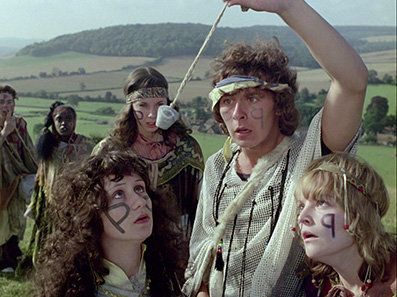
The key story elements are certainly classic Kneale, particularly the suggestion that standing stone rings, far from being sites of pagan religious significance, might actually be the ancient equivalent of warning beacons. I especially liked the notion that not all of the sacrificial sites are so handily marked, which has the effect of making just about anywhere a potential target for future attacks and a knowledge of ancient history the only hope of predicting their possible location. The idea that aspects of ancient folklore have been preserved in a children's song is also typical of Kneale, though it never feels as crucial or potent here as the dark history of Hobb's End was to Quatermass and the Pit. The lyrics have little real bearing on the phenomena and its effects, and thus contain no clues (a missed opportunity given that research suggests the song was written specifically for the series), and a later attempt to make words like "Huffety Puffety Puff" sound sinister fall a little flat. It's oddly catchy, though, and when used as an innocent sounding counterpoint to the horror that is unfolding, it's still rather creepy.
Quite how the population became so depleted (roads are empty of vehicles and the communities we do encounter are about the size of a football team) is left largely for us to imagine. Hints are dropped during a teasingly non-specific conversation between Quatermass and District Commissioner Annie Morgan about a youth-led worldwide social collapse, the touchstones of which would have been familiar to a British audience at the time of the series' first screening. But while this attempt at social commentary has the potential to give the series considerable socio-political bite, the sometimes crude nature of its targeting also undermines its effectiveness as drama.
Quatermass began life back in 1972 when Kneale was commissioned by the BBC to write a fourth Quatermass serial following the positive reception of his chilling TV play The Stone Tape. But despite having begun preliminary filming of model work for the series, the BBC ultimately cancelled a production that was clearly going to cost more to realise than they were prepared to spend. When the script was later acquired by Euston Films, the budget was upped, the scope expanded (the BBC version was planned primarily as a studio piece) and the unusual decision was made to shoot the whole thing on 35mm film. Kneale himself has claimed that the series sprang from his reaction to what he perceived as alarming societal trends and that "it was about the sixties really." It's something neither he nor the makers chose to update when the production was delayed until 1979, by when the hippy movement had become something of a distant memory and the subject for almost universally poor parody on film and TV. In this respect the series felt dated even at the time of its first TV screening, offering as it did a despairing view of disconnected youth that had missed its target by ten years, one that felt artificial in the same way the presentation of any youth-oriented movement tended to when portrayed by a media still dominated by white male middle-class establishment figures.
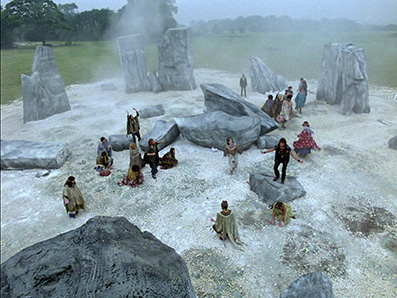
In this respect Quatermass also plays as a condemnation of what Kneale sees as a weak-willed youth that has completely lost its way and is being pulled lemming-like towards its own inevitable demise. More than ever before, the ageing Quatermass here comes across as Kneale's socio-political mouthpiece, portrayed as a tired man who no longer comprehends the world in which he now lives. Over the course of the series the message becomes clear, that salvation lies in listening to your elders and not to long-haired false prophets like Kickabout, a Charles Manson inspired figure who leads raids on properties and casually graduates to murder once he gets his hands on a machine gun and a seemingly never-ending supply of bullets. It's a viewpoint that was encapsulated by John Brosnan in Starburst, the go-to magazine for us UK-based genre fans of the time, when he described the series as "a bitter reaction by a member of an older generation to the younger generation whose apparently irrational behaviour makes them appear to belong to a totally different species." Yet in the process Kneale also captured the establishment response to the then active punk movement, whose anger and rejection of traditional values they feared but made little attempt to understand.
How much of this is down to Kneale is difficult to confirm, but it's hard to shake off the suspicion that some creative interpretation occurred during the process of transforming his words into film. Kneale himself subsequently expressed some dissatisfaction with aspects of the series as they ended up on screen, including the casting of John Mills as Quatermass and Simon MacCorkindale as Joe Kapp. Director Piers Haggard – who had already proved his worth with Dennis Potter's Pennies From Heaven and the excellent horror feature Blood on Satan's Claw – certainly paints some of the characters in broad strokes and seems to have directed his performers accordingly: John Mills exudes an almost unbroken air of exhausted weariness as Quatermass; Simon MacCorkindale is intense and angry about just about everything as Kapp; Barbara Kellerman is in a near constant state of wide-eyed anguish as his wife Clare; Margaret Tyzack reeks frustrated despair from every pore as Annie Morgan; and Ralph Arliss plays the annoying Kickalong in that overly performed manner that marks him instantly as a British film or TV character pf the period. Some of the supporting characters also have an inescapably artificial ring: the elderly underground group with whom Quatermass finds sanctuary (whose homes are constructed within the bowels of interconnected vehicles in a junk yard, a brilliant notion) feel uncomfortably like a group of bomb shelter Cockneys who have fallen through a time warp from an old Hollywood movie take on WW2 London by way of Terry Gilliam; the fag-in-the-mouth TV make-up woman is a walking cartoon; and the muggers that launch an attack on Quatermass in the opening episode sound suspiciously like public schoolboys out for a bit of mischief. This last one may well be deliberate, of course, and given that we're now having our rights stripped away by a band of privileged Eton bully boys, it actually has an unexpectedly contemporary ring. For my money the most engaging performances here are from Bruce Purchase, David Yip and Brenda Fricker as Kapp's dedicated science team, but as supporting players they don't get anything like the screen time they deserve.
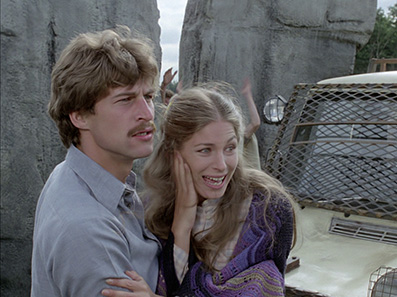
It's an uneven ride peppered with elements that don't quite click and others that miss their target by a wide margin, and in that respect Quatermass tends to sit in the shadow of its formidable forebears. But intermittently it all comes together in what was clearly the intended manner: the thrillingly staged Badder gang ambush that throws Annie Morgan's jeep off the road and sends Quatermass scurrying for his life on foot; the idea that the force that so grips the Planet People could infect a young policeman and prompt him to abandon his post and uniform and join their ranks; the end-of-episode devastation that wipes out characters that would traditionally make it through to the final reel by default; the unexpectedly epic feel of the Wembley Stadium sequence; Kneale's typically solid science fiction reasoning behind the source of the phenomena and the always compelling process of uncovering it; the decisive finality of the climactic scene; the mesmerising hospital sequence in which a Ringstone Round survivor levitates from her bed and...well, I've leave you to discover this one for yourself. And for all its quirks it remains an important work, the most lavishly produced of all of the Quatermass series and the final bow of one of the few true icons of twentieth century science fiction. And you know what? Ever since I re-watched it I can't get that damned nursery rhyme out of my head. Huffety Puffety Ringstone Round...
| The Quatermass Conclusion |
|
The decision was made at an early stage of the production to produce two versions of Quatermass, a four episode mini-series for UK TV transmission and a shorter version for cinema release abroad, which may well have informed the decision to shoot on 35mm. Titled The Quatermass Conclusion, the film is essentially a cut-down version of the series, reducing the overall running time from 215 minutes to a considerably leaner 106 minutes. Some will prefer this, but for me it robbed the series of a good deal of its texturing, and whether it works or not for you, it's very much part of its identity and its absence in the film version is keenly felt, particularly if you watch both versions in quick succession as you can here.

There is, however, one small but significant difference the confirms that both versions were planned from the start. In the sequence in which Annie Morgan and Quatermass are ambushed by a Badder gang, here the attempt to pull Quatermass from the vehicle is unsuccessful, and his subsequent encounter with the junk yard group thus doesn't occur. In the series version of the subsequent hospital scene, Annie is seen alone making an urgent phone call to government head office, but in this version Quatermass is by her side and at one point takes the phone from her to reinforce her words (see grabs above), which means that two versions of this sequence were shot with this alternative take on the scene in mind.
As mentioned above, Quatermass was shot on 35mm film, and for this release Network have used the original 35mm negatives as the source for their new restoration and transfer. Those with keen memories will recall that it was Network who delivered the superlative HD transfers of The Prisoner, which was also shot on 35mm, and there's a temptation to suggest that the restoration here is not quite as dazzling, but this really is all down to the programme in question. The look of The Prisoner was deliberately stylised, particularly in its use of lighting and colour, and Network's Blu-ray transfer really flattered this aspect. Quatermass has a far more natural aesthetic, and the transfer is thus less immediately eye-catching, but that in no way means it's of lesser quality. Framed in its original aspect ratio of 1.33:1 (this was 1979 after all), the image quality here is exceptional throughout, with stable colour reproduction and no obvious casts (except where intended), a sublimely pitched contrast range that nails the black levels without sacrificing any detail in the darker areas, and a glorious level of picture detail. This is particularly evident in the establishing wide shots and the mid shots and close-ups of characters, notably the patterns and textures of the Planet People's clothing, and there are shots where you can almost count every hair on an actor's head. There's not a trace of damage and you'll have to work hard to find even a single dust spot. An excellent job.

The transfer on The Quatermass Conclusion is of a similar quality, but as a cinema release the framing has been cropped to 1.85:1 and very slightly expanded at the sides. This is rarely an issue, as the whole project was clearly shot and framed with this crop in mind, but does obviously result in a loss of picture information when compared the series (see the grabs above).
For the series you've a choice between the original Linear PCM mono 2.0 soundtrack and a new DTS-HD Master Audio 5.1 surround mix from the original triple-track audio elements. The mono 2.0 track is serviceable enough and free of damage and noise, but just a tad narrow in its range, and frankly the remix is the only way to go – the clarity and range have been improved, and the surrounds are put to subtle but effective use to spread ambient sound around the room, particularly effective for the ominous wind that follows the attack on Ringstone Round.
The Quatermass Conclusion only has the original Linear PCM mono 2.0 track, but this still does the job.
Optional and clearly presented English subtitles for the deaf and hearing impaired are also available.
I'll also give a shout for the pre-menu Network logo, which here has been nicely integrated into a shot from the series as if it was being broadcast and observed by Quatermass and the TV station crew. Neat.
Textless Film Titles (1:59)
The opening sequence of the film version without titles or sound, which happens to be almost identical to how it plays out at the start of the first episode, which also has no text overlays for this sequence but does have sound.
Episode Recaps (4:26)
Three ‘previously on Quatermass' style recaps of previous episodes. They include a dryly delivered explanatory voice-over of the sort that used to provide descriptive tracks for sight-impaired viewers. The sound for the first of these has been lost.
Textless End Titles (2:53)
As you might expect, this is the end title sequence without the titles. Or the sound, as it happens.
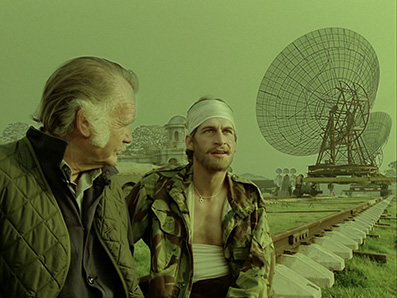
Trailer [mute] (4:33)
A lot of soundtrack material appears to have been lost, and this trailer for the film version is another casualty of this, but you still get a flavour of how it was sold.
Image Gallery (2:51)
A rolling gallery of production and behind-the-scenes stills, which are of a high quality but occupy only about half of the available screen space.
Also included with the release version is a Booklet by archive TV historian Andrew Pixley, but this was not included with the review discs. Hopefully this will shed a little more light onto the production.
I'm aware from the unprecedented response to our news story about this release that Quatermass has a considerable cult following. As an enthusiast for all previous Quatermass stories and their film and TV incarnations (at least what remains of them), I was hoping to return to the Professor's final adventure and see it with new and more enthusiastic eyes, but it actually played out almost exactly as I remember. This is solid science fiction television that is intermittently undermined by an overstated and almost pathological fear of the younger generation, and by performances that would have benefited from being a little more varied in their range and more naturalistic in their delivery. There's still plenty to enjoy and admire here, in the central concept, in the process of uncovering the nature of the threat, and in the assured handling of individual scenes. The extra features are disappointingly thin on the ground, but the presentation of both the series and the feature film version is exceptional, and that should be enough to make it an essential purchase for fans.
|